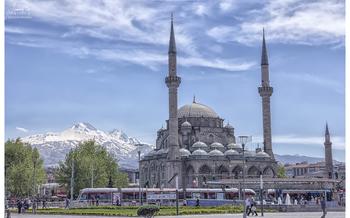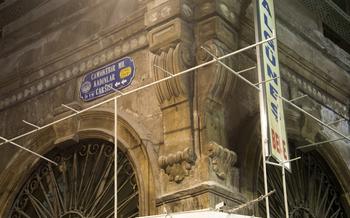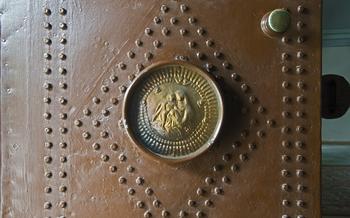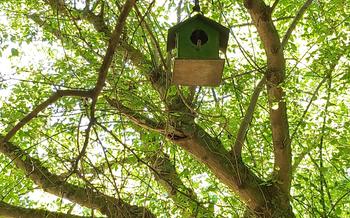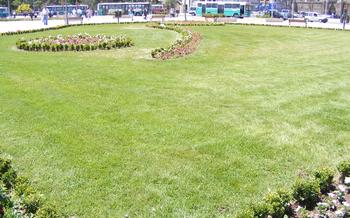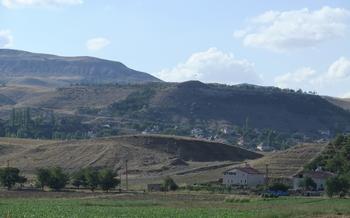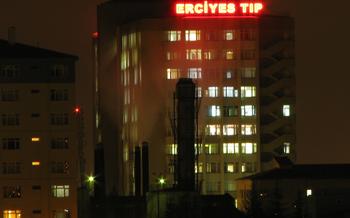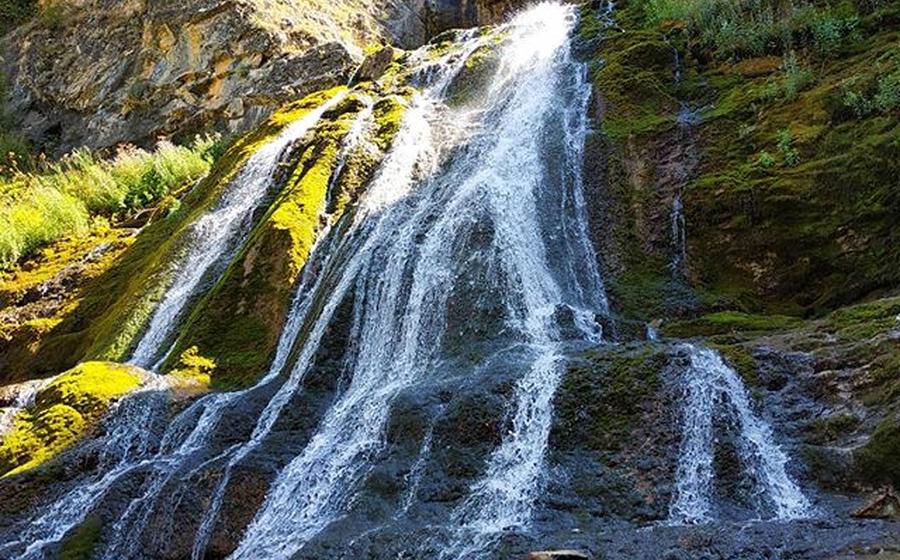
Ali Dağı Underground City
- Historical Significance
- Architectural Marvel
- Intricate Ventilation and Water Systems
- Hidden Rooms and Passageways
- Exploring the City
- The Church
- The Granary
- The Kitchen
- The Workshop
- The Living Quarters
- The Defense System
- Nearby Attractions
- Tips for Visitors
- Insider Tip: Unraveling Hidden Secrets
Historical Significance
Beneath the ancient landscape of Kayseri, Turkey, lies a remarkable subterranean marvel—the Ali Dağı Underground City. This labyrinthine complex, carved deep into the volcanic rock, stands as a testament to the ingenuity and resilience of past civilizations. Its origins shrouded in mystery, the city is believed to have been constructed in the 7th or 8th century AD, serving as a refuge for thousands during times of invasion and warfare. The city's intricate design and strategic location speak to the advanced planning and engineering skills of its creators. The identity of these original inhabitants remains a subject of debate, adding to the intrigue surrounding this subterranean masterpiece.
Architectural Marvel
The Ali Dağı Underground City is not simply a subterranean refuge; it is an architectural marvel that showcases the ingenuity and resourcefulness of its ancient builders. The city's unique underground structures are a testament to their engineering prowess.
Intricate Ventilation and Water Systems
The city's ventilation system is a marvel in itself. A series of interconnected shafts and tunnels ensures a constant flow of fresh air throughout the city, even in its deepest recesses. This ingenious design prevented the buildup of harmful gases and kept the inhabitants healthy.
Equally impressive is the city's water system. A network of underground channels and cisterns collected and stored rainwater, providing a reliable source of water for the city's inhabitants. The water was also used to irrigate underground gardens, providing a source of fresh produce.
Hidden Rooms and Passageways
The Ali Dağı Underground City is full of hidden rooms and passageways, each with its own unique purpose. Secret chambers were used for storage, hiding, or religious ceremonies, while narrow tunnels provided escape routes in case of danger. The city's labyrinthine layout made it easy for its inhabitants to evade detection and remain hidden from invaders.
Exploring the City
To truly immerse yourself in the mysteries of the Ali Dağı Underground City, guided tours are highly recommended. These tours, led by knowledgeable guides, take you on a journey through the different levels and chambers of the city, revealing hidden features and artifacts that bring the past to life.
As you descend into the depths of the city, you'll marvel at the intricate network of tunnels and rooms, each serving a specific purpose. Discover hidden chambers where residents sought refuge and stored their belongings, and explore the secret passageways that allowed them to navigate the city unseen.
Along the way, you'll encounter fascinating artifacts that provide glimpses into the lives of the city's inhabitants. From pottery and tools to religious objects, these artifacts tell stories of resilience, ingenuity, and the challenges of living underground.
But perhaps the most captivating aspect of exploring the Ali Dağı Underground City is the sense of mystery that surrounds it. Who were the original inhabitants of this subterranean world? What drove them to create such an elaborate and hidden refuge? As you wander through the tunnels and chambers, let your imagination run wild as you piece together the clues and unravel the secrets of this ancient city.
The Church
The Ali Dağı Underground City is not only an architectural marvel but also a testament to the religious beliefs of its inhabitants. Within the depths of the city, an ancient church stands as a symbol of faith and spirituality. This subterranean sanctuary, carved out of the same rock as the rest of the city, exudes an aura of reverence and tranquility.
The church's architectural features are both simple and awe-inspiring. Its walls are adorned with intricate carvings and symbols, depicting scenes from the Bible and paying homage to the Christian faith. The altar, positioned at the far end of the chamber, is a focal point of devotion, where prayers were once whispered and hopes were entrusted to a higher power.
Beyond its architectural significance, the church holds deep religious meaning for the people who sought refuge within the underground city. It provided a sacred space for them to gather, pray, and find solace in times of turmoil and uncertainty. The presence of this church suggests that religion played an integral role in the daily lives of the inhabitants, offering them comfort and guidance in the face of adversity.
The Granary
Food storage was crucial for the survival of the underground city's inhabitants. The granary, a vital component of the city's infrastructure, played a central role in ensuring a steady supply of provisions during times of siege or conflict.
Carved deep into the rock, the granary was designed to store large quantities of grain and other foodstuffs. Its impressive size and capacity allowed the city to maintain a strategic reserve of food, providing sustenance to its residents even during prolonged periods of isolation.
To preserve the stored food, the granary employed various techniques. Grain was kept in sealed containers and placed on raised platforms to prevent moisture damage. Controlled ventilation systems helped maintain optimal conditions, ensuring the quality and longevity of the stored goods.
The granary's significance extended beyond its practical function. It represented the community's foresight and resilience, demonstrating their ability to plan for contingencies and secure their food supply in the face of adversity.
The Kitchen
The underground kitchen in the Ali Dağı Underground City is a testament to the resourcefulness and resilience of its inhabitants. This well-preserved space provides a glimpse into the daily life of the city's former residents and their culinary practices.
The kitchen features a large central hearth, where fires were lit to cook meals for the entire community. Around the hearth, several stone-built niches served as storage spaces for cooking utensils and ingredients. These niches also helped to keep food cool and dry.
The inhabitants of the Ali Dağı Underground City were skilled in preserving food, essential for survival in a subterranean environment. They used techniques such as drying, salting, and smoking to extend the shelf life of their food supplies.
The act of communal dining was an essential part of life in the underground city. The kitchen served as a gathering place where residents could come together to share meals, socialize, and exchange stories. This sense of community was crucial for maintaining morale and unity in a challenging environment.
The Workshop
The underground city of Ali Dağı also featured a well-equipped workshop where the inhabitants engaged in various crafts and industries. This workshop played a crucial role in the city's self-sufficiency and resilience during times of isolation.
The workshop was a hub of creativity and ingenuity, where skilled artisans utilized locally available materials to create essential goods and tools. These included pottery, metalworking, woodworking, and textile production, among others.
The tools and materials used in the workshop were often simple but effective, reflecting the resourcefulness of the city's inhabitants. They crafted pottery using local clay, forged metal tools and weapons from iron ore, and wove textiles from wool and other natural fibers.
The workshop also served as a place for innovation and experimentation. Craftsmen collaborated and shared ideas, leading to the development of new techniques and products. These innovations not only improved the quality of life within the underground city but also contributed to the city's economic prosperity.
The workshop's legacy continues to inspire modern-day artisans and craftspeople in the region. Many local artisans draw inspiration from the techniques and designs used by their ancestors in the Ali Dağı Underground City, creating unique and authentic handicrafts that celebrate the region's rich cultural heritage.
The Living Quarters
The living quarters in the Ali Dağı Underground City were designed to provide shelter and comfort to its inhabitants. These spaces, carved into the soft volcanic rock, varied in size and layout depending on the family's needs. Each living quarter typically consisted of a sleeping area, a storage area, and a cooking area.
The sleeping area was usually located in a corner of the room and was elevated from the ground to provide warmth and protection from moisture. Beds were made of simple wooden frames covered with animal skins or blankets. Personal belongings were stored in wooden chests or niches carved into the walls.
The cooking area was often located near the entrance of the living quarter. It consisted of a simple hearth or oven built into the rock. Cooking utensils, such as pots, pans, and bowls, were made of clay or metal. The inhabitants of the underground city relied on a variety of food sources, including grains, vegetables, fruits, and meat. They also kept animals such as chickens and goats for milk and eggs.
Living underground presented several challenges. The air was often damp and smoky, and there was little natural light. The inhabitants had to be resourceful and adaptable to survive in these conditions. Despite the challenges, the underground city provided a safe and secure haven for its inhabitants during times of war and persecution.
The Defense System
The Ali Dağı Underground City was built not only as a refuge but also as a fortress. Its strategic location, high up on a hill overlooking the surrounding landscape, provided a natural defense against invaders. The city's inhabitants constructed a sophisticated system of traps and secret passages to protect themselves from attack.
One of the most impressive defense mechanisms is the intricate network of tunnels and chambers. These narrow, winding passages were designed to confuse and disorient intruders, making it difficult for them to navigate through the city. Many of the tunnels have sudden drops or sharp turns, which would have been difficult for an attacker to anticipate.
In addition to the tunnels, the city's inhabitants also constructed a number of secret doors and passages. These hidden entrances were often disguised as storage areas or even as part of the rock wall. Some of these secret passages led to hidden chambers where the city's residents could hide or escape if necessary.
The strategic location of the city also contributed to its defense. Situated on a hilltop, the city had a clear view of the surrounding area, allowing the inhabitants to spot approaching enemies from a distance. This gave them ample time to prepare for an attack or to retreat to the safety of the underground city.
The combination of these defense mechanisms made the Ali Dağı Underground City a formidable fortress. It is no wonder that the city remained unconquered for centuries, serving as a safe haven for its inhabitants during times of war and invasion.
Nearby Attractions
Kayseri is a treasure trove of historical and natural wonders, inviting you to venture beyond the Ali Dağı Underground City. Explore the iconic Erciyes Mountain, a dormant volcano that beckons hikers and skiers with its majestic slopes. Step into the realm of history at the Kayseri Castle, a formidable fortress that has stood guard over the city for centuries. Marvel at the intricate architecture of the Hunat Hatun Complex, a stunning caravanserai that once served as a resting place for weary travelers on the Silk Road.
Immerse yourself in the vibrant local culture at the Kayseri Bazaar, a bustling marketplace where you can haggle for unique souvenirs and savor the flavors of traditional Turkish cuisine. Discover the rich heritage of the city at the Kayseri Archaeological Museum, home to an impressive collection of artifacts that shed light on the region's fascinating past. For a taste of nature's splendor, venture to the Sultansazlığı National Park, a haven for birdwatchers and nature enthusiasts, where you can spot over 300 species of birds in their natural habitat.
Tips for Visitors
Your exploration of the Ali Dağı Underground City will be enhanced by following a few simple tips. First and foremost, ensure your comfort by wearing sturdy and comfortable shoes that can navigate uneven surfaces. The dimly lit tunnels and chambers may require additional illumination, so bring a flashlight or headlamp to brighten your path. Be mindful of the low ceilings and narrow passageways, as navigating them may require careful maneuvering. Finally, remember that this historical site is a testament to the resilience and ingenuity of past civilizations. Treat it with respect and preserve its integrity for future generations to appreciate.
Insider Tip: Unraveling Hidden Secrets
During recent excavations in the Ali Dağı Underground City, a hidden chamber was unearthed, adding a new layer of intrigue to the site. This secret chamber, once concealed behind a cleverly disguised wall, is believed to have served as a sanctuary or a meeting place for the city's inhabitants. Special tours are now available for history enthusiasts to explore this hidden gem and delve deeper into the mysteries of the underground city. These tours offer exclusive access to the chamber and provide fascinating insights into the lives of the people who sought refuge within its walls.

